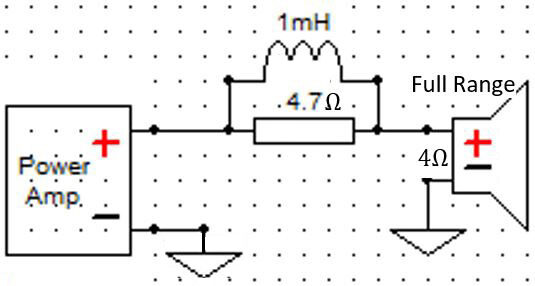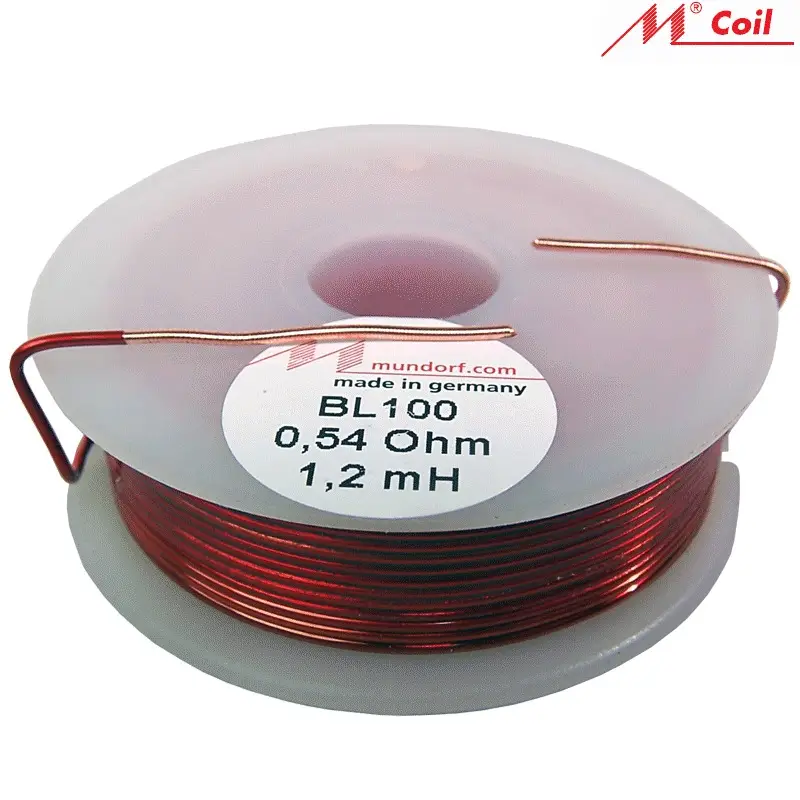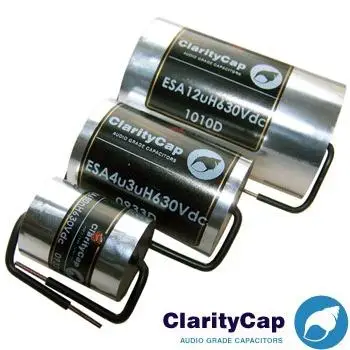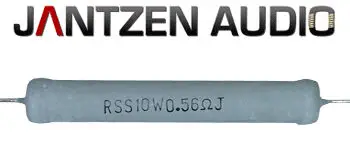Full Range Loudspeaker
A high quality sealed box full range loudspeaker.
- No crossover – Seamless and coherent full range sound
- Trapezoidal cabinet construction and asymmetrical driver placement suppress internal standing waves
- Rigid 18mm birch plywood
Tang Band W4-1337SDF full range driver has been chosen for this speaker after experimenting with several other full range drivers, as it exhibited the best performance in its price range.
Other full range drivers may be used upon wish.
Baffle Step and High Frequency roll-off compensation is highly recommended and well worth the extra cost (see explanation below).
The required inductor, resistor and capacitor can be mounted within the cabinet if so wished.
Baffle Step and HF roll-off Compensation

direct coupling
A full range driver connected directly to an amplifier.
The blue curve shows the spectral energy distribution of the signal fed to the driver – a “flat” signal.
It would also be the frequency response of an acoustically ideal driver mounted on an infinitely large flat baffle.
When mounted in a box of average size, the driver’s on axis SPL gradually increases with frequency, starting at about 200Hz until stabilizing 6dB louder at about 800Hz (red curve).
This increase in SPL is commonly referred to as “Baffle Step”.

RL Compensation
The baffle step can be cancelled out by means of a shelving low pass network comprised of a resistance and an inductance.
At low frequencies, the network presents a low series impedance and is therefore electrically transparent.
As frequency increases, the network impedance increases too, leading to a weaker signal at the driver input.
At still higher frequencies, the network impedance ceases to increase with frequency and stabilizes on its maximal value – the resistor value. Accordingly, the signal fed to the driver ceases to weaken and its level stabilizes.







